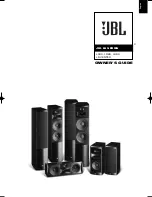
- 4 -
In addition, upon development of a near-field
monitor, we decided to expose our speakers to
users' evaluation as to its true value, by placing the
focus on a passive type, or non-amplified type,
which will provide users with an opportunity for
optimum speaker driving in a manner meeting
studio-specific requirements.
BASICS OF THE HP SYSTEM
'HP' is an abbreviation of hyperbolic paraboloid
which is normally called an 'HP shell' or hyper
shell, and is a 3rd-order curved surface structure.
This structural theory has long been well known in
the field of the structural mechanics.
The Orchestra House in Sydney, Australia, a good
example to which the HP structure is applied, is
famed world-wide for its beautiful form.
The HP structure is characterized primarily by the
fact that movement of a line connecting 2
line segments which exist on different surfaces
results in composition of a hyperboloid and
paraboloid.
Our purpose and reason for the world's first
application of this HP structure to the NF-1 near-
field monitor as an ideal diaphragm configuration
can be explained by 3 acoustic advantages which
were not available from conventional diaphragms.
Without solution to these 3 items, it would be
impossible to predict what the next generation near-
field monitors should be.
APPLICATION TO DIAPHRAGMS OF THE HP SYSTEM
1) HP diaphragms composed of lines
Being a curved surface, and unlike conventional
diaphragms structured with curved lines, the HP
structure basically consists of straight line
structures.
As a result, involved in-plane stress is only a
shearing force without the presence of bending
stress, culminating in strength at high level.
Strength of such level can raise the resonance
frequency of diaphragms to reproduce fast-rising
sounds that make listeners perceive faster
responsiveness over conventional diaphragms.
Besides, the straight lines, being of varied lengths,
prevent any specific standing waves from being
created on diaphragms, with subsequent freedom
from peaks, and thus, resulting in smooth response.
2) HP Diaphragms having torsional curved surface
Nothing is free of natural self-resonance frequency.
It has been known that self-resonance frequency
creates sound inherent to the material, perceptible
as sound unique to it. Speaker diaphragms are no
exception and have material-specific sound which
characterizes the speaker. In the case of home use
speakers, such timbre may appeal to listeners as
being comfortable
and pleasant.
However, when
using speakers A
and B for the
purposes of
monitoring the
same program
source in different
timbre will mean
that some particular
frequencies are
restricted by
speakers with their
natural resonance
frequency. It can
be, therefore,
reasonably assumed
that ideal
diaphragms for
monitor speakers
should have natural
resonance
suppressed to the
fullest possible
extent.
The HP structure is
characterized by its
torsionally curved
surface structure.
Figures 2 and 3
show FEM modal
analysis results of
the 1st to 4th free
resonances
observed on a
15
0
torsional HP
structure and on
plane structure,
where no evidence
of major resonance
is apparent on the
HP structure.
BASICS OF THE HP SYSTEM
FEM modal analyses of freely
vibrating aluminum plane
FEM modal analyses of a
freely vibrating HP shell
1st order mode
358Hz
2nd order mode
378Hz
3rd order mode
488Hz
4th order mode
498Hz
1st order mode
30.7Hz
2nd order mode
39.3Hz
3rd order mode
54.9Hz
4th order mode
77.7Hz
Figure 2
Figure 3
Resonance
is large.
Resonance is
small and dispersed.
Summary of Contents for NF-1
Page 1: ...Technical White Paper NEAR FIELD STUDIO MONITOR ...
Page 2: ... 2 ...


































